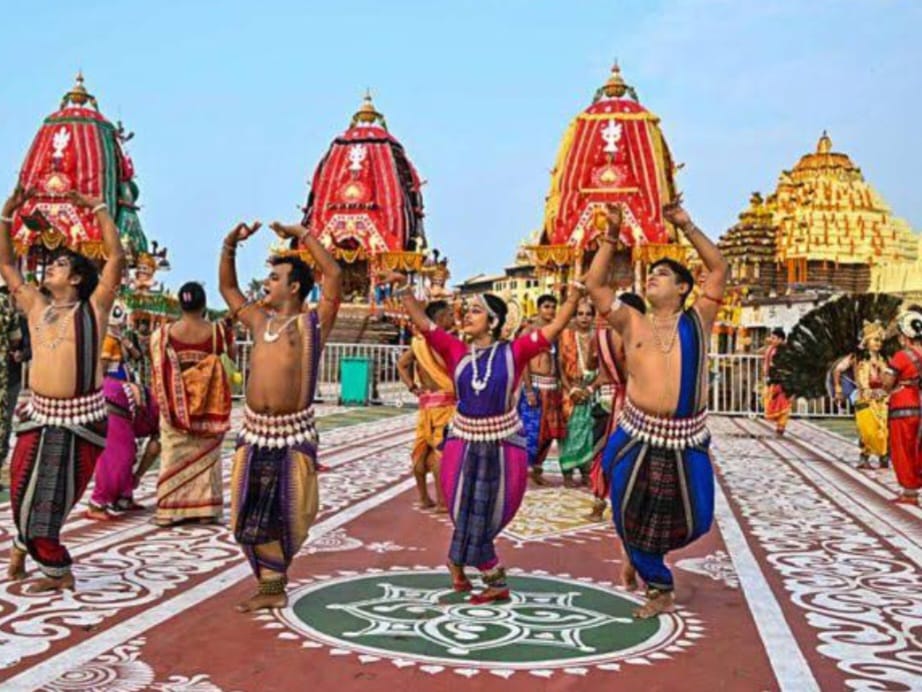Puri Jagannath Temple: A Holy Pilgrimage Site
Puri Jagannath Temple: A Holy Pilgrimage Site
Introduction
The Puri Jagannath Holy place is just one of the most admired and ancient holy places in India. It is located in the coastal community of Puri in the state of Odisha. Recognized for its annual Rath Yatra (Chariot Event), the temple is dedicated to Lord Jagannath, a kind of Lord Vishnu, and is considered among the four Char Dham trip websites in Hinduism. The holy place’s unique rituals, building grandeur, and abundant background make it a considerable spiritual and social site.

Historical Background
The history of the Puri Jagannath Holy place goes back to the 12th century. According to historic documents, the temple was developed by King Anantavarman Chodaganga Deva of the Eastern Ganga dynasty. The building and construction of the holy place is thought to have started in 1136 CE and completed in 1150 CE.
Architectural Marvel
The Puri Jagannath Temple is a building masterpiece. The holy place complex spread over 400,000 square feet and is surrounded by a high fortified wall surface referred to as Meghanada Pacheri. The primary temple structure, called the Vimana, stands at an elevation of 214 feet and is embellished with detailed carvings and sculptures illustrating different divine beings and mythical scenes.

The temple complex comprises four main structures:
-
Vimana: The main temple where the deities are enshrined.
-
Jagamohana: The assembly hall for devotees.
-
Natamandira: The festival hall for dance and music performances.
-
Bhogamandapa: The hall where offerings are prepared and presented to the deities.
The temple’s entrance, known as the Singha Dwara (Lion Gate), is guarded by two immense statues of lions. There are three other entrances: Ashwa Dwara (Horse Gate), Vyaghra Dwara (Tiger Gate), and Hasti Dwara (Elephant Gate). Each gate holds significant symbolic meaning and is associated with various rituals and traditions.

Deities and Idols
The primary deities of the Puri Jagannath Temple are Lord Jagannath, his elder brother Balabhadra, and their sister Subhadra. The deities are made of wood and are uniquely shaped, with large round eyes and distinctive features. Unlike other Hindu temples where the deities are made of stone or metal, the wooden idols of Jagannath, Balabhadra, and Subhadra are replaced every twelve to nineteen years in a grand ceremony called Nabakalebara.

One of the most significant rituals is the Rath Yatra, an annual festival where the deities are taken out of the temple in grand chariots and paraded through the streets of Puri. The Rath Yatra attracts millions of devotees and is celebrated with great dedication and enthusiasm.
Festivals and Celebrations
The Puri Jagannath Temple is known for its vibrant and grand celebrations of various festivals. Some of the major festivals include:
1. Rath Yatra: The most famous festival where the deities are taken out in chariots.
2. Snana Yatra: The bathing festival of the deities.
3. Chandan Yatra: A festival where the deities are taken to a nearby pond and smeared with sandalwood paste.
4. Dola Yatra: The swing festival where the deities are placed on swings.
5. Nabakalebara: The festival of renewal where the wooden idols of the deities are replaced with new ones.
Each festival is marked by elaborate rituals, music, dance, and a festive atmosphere that attracts devotees and tourists from all over the world.

Cultural Significance
The Puri Jagannath Temple holds immense cultural significance. It is not only a place of worship but also a center for art, music, and dance. The temple has its own orchestra called the Gajapati’s band, which plays traditional music during rituals and festivals. The temple is also associated with various classical dance forms like Odissi and Gotipua, which are performed during festivals and special occasions.

The temple’s kitchen, known as the Rosai Ghara, is one of the largest kitchens in the world. It prepares the Mahaprasad, the holy food offered to the deities, which is then distributed among the devotees. The preparation and distribution of Mahaprasad follow strict rituals and are considered a sacred act.

Just a short distance from the Jagannath Temple lies the Puri Sea Beach, known for its golden sands, gentle waves, and picturesque views. It is a favorite among tourists for its natural beauty and calm atmosphere.

Puri Sea Beach offers a breathtaking view of the sunrise and sunset over the Bay of Bengal. The beach is divided into several sections, with Swarga Dwar Beach being the most popular for its lively atmosphere.
Activities available at the beach include:
-
Camel and Horse Rides: A unique experience, especially for children.
-
Water Sports: Activities such as surfing, jet skiing, and parasailing are available for adventure enthusiasts.
-
Sand Art: Puri is famous for its sand artists who create magnificent sculptures, drawing crowds to marvel at their artistry.
